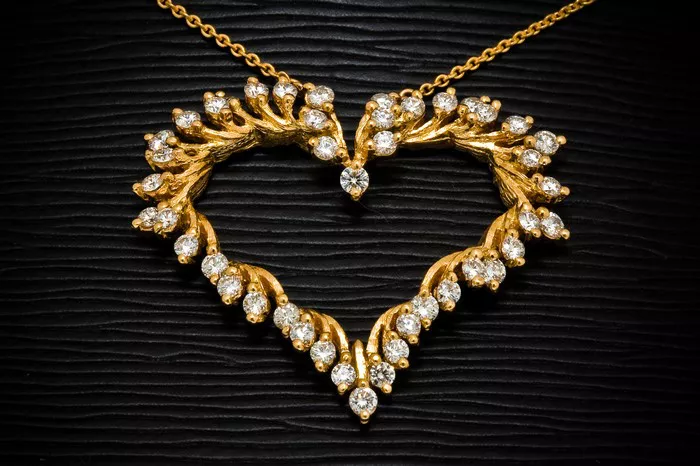In the realm of precious metals, gold stands as an emblem of wealth, luxury, and stability. Its allure has transcended civilizations and epochs, making it one of the most coveted materials in human history. However, with its high value comes the risk of counterfeit or impure representations circulating in the market. Thus, the ability to authenticate gold is crucial for investors, collectors, and consumers alike. This article aims to provide comprehensive guidance on discerning real gold from its counterfeit counterparts.
Visual Inspection Tips
A fundamental step in gold authentication involves visual examination. Authentic gold items typically bear specific hallmarks or stamps indicating their purity and origin. These marks may include numbers denoting karatage, manufacturer’s symbols, or country of origin stamps. Hallmarks are often located in inconspicuous areas such as clasps, inner bands of rings, or necklace fasteners. A magnifying glass can aid in scrutinizing these marks for authenticity.
Additionally, genuine gold exhibits certain visual characteristics that distinguish it from imitations. It boasts a distinct luster and hue that remains consistent across its surface. Unlike some counterfeit alloys, authentic gold does not tarnish or corrode over time. Furthermore, reputable manufacturers often engrave their logos or signatures onto gold items, signifying quality craftsmanship and authenticity.
Simple Tests to Perform at Home
While professional testing equipment provides definitive results, several simple tests can be conducted at home to preliminarily assess gold authenticity.
1. Magnet Test: Gold is not magnetic, meaning it will not be attracted to a magnet. To conduct this test, place a magnet near the item in question. If the piece is authentic gold, it should not exhibit any magnetic properties.
2. Float Test: Authentic gold is denser than most other metals, causing it to sink when submerged in water. Fill a container with water and gently drop the item into it. If the object sinks to the bottom, it is likely genuine gold. However, exercise caution as this test may not be foolproof for very small items or those with air cavities.
3. Skin Test: Pure gold does not react with the skin, so wearing authentic gold jewelry should not cause discoloration or irritation over time. This test is more subjective and may not be applicable to all individuals, especially those with sensitive skin or allergies.
Professional Testing Methods
For a more accurate assessment of gold authenticity, professional testing methods are recommended.
1. Acid Test: Widely employed by jewelers and goldsmiths, the acid test involves applying nitric acid to a small scratch on the gold item. The acid’s reaction with the metal reveals its purity. Genuine gold will not react or dissolve in nitric acid, whereas lower karat alloys will exhibit varying degrees of dissolution.
2. X-Ray Fluorescence (XRF) Testing: This non-destructive method utilizes X-ray technology to analyze the composition of gold items. XRF spectrometers emit X-rays onto the surface of the sample, causing it to fluoresce with characteristic energy levels. By measuring the emitted radiation, the device can determine the elemental composition and purity of the gold.
Understanding Gold Purity
Gold purity is denoted in karats, with 24 karat gold being the purest form. Each karat represents 1/24th of the whole, indicating the proportion of gold within an alloy. For instance, 18 karat gold contains 18 parts pure gold and 6 parts other metals, making it 75% gold by weight. The higher the karatage, the greater the purity and value of the gold item. However, pure gold is relatively soft and malleable, making it unsuitable for certain applications such as jewelry. Hence, alloys with lower karatages are often utilized to enhance durability and strength while retaining the metal’s inherent beauty.
Precautions and Considerations
Despite employing various authentication methods, uncertainties may still arise regarding the authenticity of gold items. In such instances, it is advisable to seek professional appraisal from reputable experts or institutions. Professional appraisers possess specialized knowledge and equipment to accurately assess gold authenticity and determine its market value. Additionally, when purchasing gold, ensure to obtain proper documentation and certificates of authenticity from trusted sellers. Vigilance and due diligence are paramount in safeguarding oneself against counterfeit or misrepresented gold products.
In conclusion, the ability to authenticate gold is indispensable in navigating the intricate world of precious metals. By familiarizing oneself with visual inspection techniques and professional testing methods, individuals can make informed decisions when buying, selling, or investing in gold. Remember, while gold’s enduring allure may captivate many, it is prudent to verify its authenticity to safeguard against counterfeit schemes and ensure the preservation of its timeless value.

